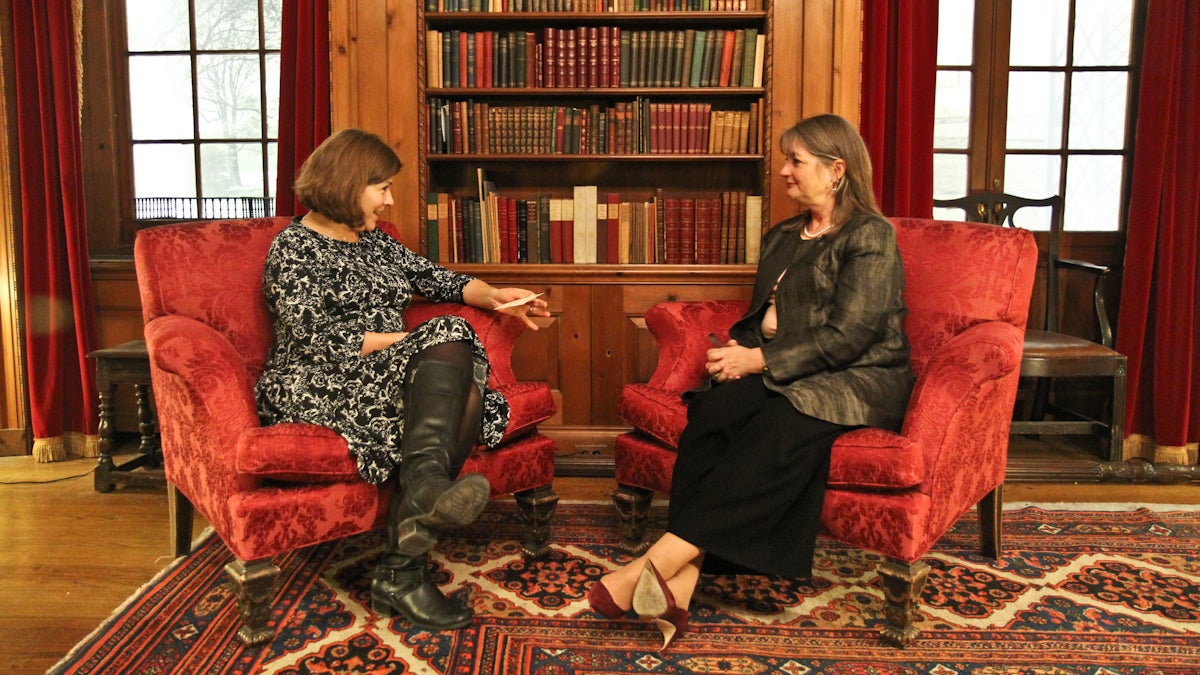Are libraries nearing their due date, or are they in a ‘carpe diem’ moment?
Listen
Maiken Scott interviews Siobhan Reardon at the Philadelphia Free Library. (Kimberly Paynter/WHYY)
This piece is part of our “Rebirth Of The Library” show. Take a look at the rest of our stories here.
Libraries seem to be at a precipice. With printed books quickly being replaced by e-readers and iPads—which allow us to have an entire library sitting on our nightstands—some think their future is less than certain.
Not Siobhan Reardon, though. The President and Director of the Philadelphia Free Library was named Library Journal’s 2015 Librarian of the Year by thinking big and positively about the role of libraries in the lives of those who use them.
In fact, she sees this as a moment of opportunity for libraries.
“This is the carpe diem moment for libraries right now,” she explained. “We are in an amazing transition from transactional organization to something that’s more transformational and experiential.”
To do this, Reardon said, libraries need to evolve to understand how people learn.
“The more we can provide programming and resources that get to this concept of connected…open, loud, conversational type learning. We need to transition to that kind of a space.”
While libraries have traditionally been places of silent research, she sees their next iteration as…well…louder.
“Yes, the research component is very much part of our lives,” she conceded, “we have students coming to us with that practice of how to get to information—but it’s this very civic engagement type of engagement we’re going for. Safe spaces for conversations.”
Part of the transition she’s been leading is about the physical space the library dominates. She says the Free Library is benefitting from its forward-thinking 1927 design.
“We are going to disassemble the stacks and open two very big spaces, a common space and a business center,” she said. “What’s fascinating about the stack system [is that it] was built as an erector set. [So] we are using it as scaffolding as we’re beginning to deconstruct. I would like to make sure that our libraries are beautiful, welcoming, civically engaged spaces.”
She plans big physical changes to Philly’s library system, but, she says, beautiful buildings aren’t enough.
“I also want to make sure that the community feels connected to their library,” she concluded. “Their input into what we do—programming, materials, et cetera—that they feel they have a strong participation in the work we want to conduct.”
WHYY is your source for fact-based, in-depth journalism and information. As a nonprofit organization, we rely on financial support from readers like you. Please give today.



